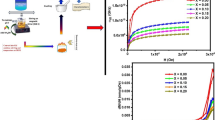Abstract
Zirconolite and pyrochlore are considered as promising host phases for high level waste (HLW). However, correct information on substitution mechanisms, forms of dopants incorporation in their structures and distortions in coordination polyhedra is presently unavailable. To clarify these points we use the electron paramagnetic resonance (EPR). Pyrochlore and three of zirconolite polytypes: zirconolite-2M, zirconolite-3T, and zirconolite-30 are considered. Pyrochlore is the “parent” structure for zirconolite since any zirconolite variety is produced by means of distortion of the initial pyrochlore structure. Space groups of pyrochlore and basic polymorphous zirconolite varieties found from XRD and TEM data, as well as interatomic distances and angles, were taken from reference data. This allows the determination of the most probable sites for impurities, substitution mechanisms, and local symmetry of coordination polyhedra (initial). Ions chosen for EPR were Gd (III) as an analog of trivalent rare earth and actinide elements which are also occurred in HLW and Fe (III) as a typical corrosion product which occurs in all HLW. For Gd (III) a strong ligand field approximation is suggested, theoretical computation using perturbation theory in this approximation has been carried out. All the non-diagonal members plus magnetic field were chosen as perturbation and formulae for transition frequencies, estimations of fine structure and g-factors parameters in the given approximation have been obtained.
Similar content being viewed by others
References
E. Aleshin, R. Roy, J. Amer. Cream. Soc. 45, 18 (1962).
B. C. Chakoumakos, R. C. Ewing, in Sciefnlific Basis for Nuclcear Wascle Management IX edited by C. M. Jantzen, J. A. Stone and R. C. Ewing (Mat. Res. Soc. Symp. Proc 44, Pittsburgh, PA, 1985) pp. 641–646.
G. Lumpkin, E. C. Ewing, Phys. Chem.Minerals 16, 2 (1988).
R. C. Ewing, W. J. Weber, W. Lutze, Dissposal of Weapon Plutonium, edited by E. R. Merz and C. E. Walter (Kluwer Academic Publishers, Amsterdam, 1996) pp. 65–83.
G. R. Lumpkin, R. C. Ewing, B. C. Chakoumakos, R. B Greegor, F. W. Lytle; E. M Foltyln, F. W. Clinard Jr., L. A. Boatner, M. M. Abraham, J. Mater. Res. 1, 564 (1986).
B.M. Gatehouse, I.E. Grey, J.H. Roderick, H.J. Rossell, Acta Cryst. B 37, 306 (1981).
F. Mazzi, R. Munno, Amer. Mineral. 68, 262 (1983).
E. R. Vance, B. D. Begg, R. A. Day, C. J. Ball, in Scientific Basis for Nuclear Waste Management XVIII, edited by T. Murakami and R. C. Ewing (Mat. Res. Sos. Symp. Proc. 353Pittsburgh, PA, 1995), pp. 767–774.
E. R. Vance, A. Jostsons, R. A. Day, C. J. Ball, B. D. Begg, in Scientific Basis for Nuclear Waste Management XVIII, edited by W. M. Murphy and D. A. Knecht (Mat. Res. Soc. Symp. Proc. 412, Pittsburgh, PA, 1996) pp, 41–47.
E. R. Vance, K. P. Hart, R. A. Day, B. D. Begg, P. J. Angell, E. Loi, J. Weir, V. M. Oversby, in Scientific Basis for Nuclear Waste Mtnagemente XVIII, edited by W. M. Murphy and D.A Knecht (Mat. Res. Soc. Symp. Proc. 412, Pittsburgh, PA, 1996) pp. 49–55.
M. Rappaz, M. M. Abraham, J. O. Ramey, L. A. Boatner, Phys. Rev. B 23, 1012 (1981).
A. Y. Troole, S. V. Stefanovsky, L. D. Bogomolova. Phys. Chem. Mater. Treat (Russ.) 4, 75 (1998).
K. A. Muller, Univerisitesforlaget, 61–96 (1971).
J. Kliava, EPR Spectroscopy Disordered, Solids (Zinatne, Riga, 1988).
P. E. Fielding, T. J. White, J. Mat. Res. 2 (3) 387 (1987).
L. E. Iton, C. M. Brodbeck, S. L. Suib, G. D. Stucky, J. Chem. Phys. 79 (3) 1135 (1983).
O. A. Knyazev, S. V. Stefanovsky, S. V. Ioudintsev, B. S. Nikonov, B. I. Omelianenko, A. V. Mokhov, A. I. Yakushev, in Scientific Basis for Nucleair Watste Malnagemeniet XX, edited by W. J. Gray and I. R. Triay (Mat. Res. Soc. Symp. Proc. 465, Pittsburgh, PA, 1997) pp. 401–408.
O. A. Knyazev, S. V. Stefanovsky, ICEM’971nt. Conf., Sept. 11-16, 1997, p. 333, Singapore 1997.
V. L. Idenbom, Crystallography, 5, 115 (1960).
A. A. Coehlo, R. W. Cheary, K. L. Smith, J. Sol. State Chem. 129, 246 (1997).
Author information
Authors and Affiliations
Rights and permissions
About this article
Cite this article
Troole, A.Y., Stefanovsky, S.V. Analysis of Coordination Polyhedra Symmetry in Pyrochlore and Zirconolite Structures. MRS Online Proceedings Library 556, 35 (1998). https://doi.org/10.1557/PROC-556-35
Published:
DOI: https://doi.org/10.1557/PROC-556-35




